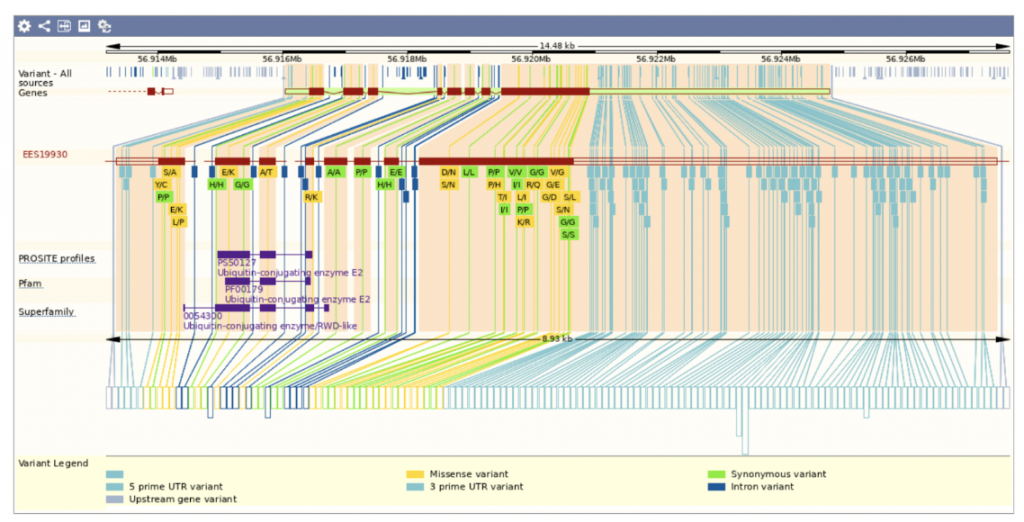SbPho2, Phosphorus Starvation Signaling Gene, Identified in Sorghum and Shown to be Involved in Regulating the Uptake of Multiple Nutrients
Phosphorous (Pi) availability significantly affects sorghum production. Although many regions have soil with abundant phosphorus, some developing countries have significant sorghum growth and yield limitations due to low Pi fertilizer access or application. Inefficient application of exogenous Pi also increases costs and pollution. Scientists from Liaoning Academy of Agricultural Sciences in Shenyang, China investigated Pi signaling to gain insight into breeding Pi-efficient sorghum. Geng et al. (2005) and Hu et al. (2011) demonstrated that Arabidopsis and rice plants with mutations in PHO2 accumulated two to four times more Pi in their shoots than their wild-type counterparts. The present study examines this phenotype in sorghum. Zhu et al. identified sbpho2 mutants in an EMS population and mapped the trait to an E2 conjugase gene (Sobic.009G228100), a putative orthologue of the rice and Arabidopsis PHO2 genes. The researchers then compared the root architecture of sbpho2 mutant sorghum plants to rice ospho2 mutants and found that while the rice mutants showed normal lengths of primary roots (Hu et al., 2011) under both Pi-sufficient and Pi-deficient conditions, the sorghum mutants showed reduced primary root growth. However, under Pi starvation conditions sorghum mutant’s primary and adventitious root elongation ratios were higher than those of the wild type. These Pi starvation experiments, as well as the transformation of SbPHO2 into the rice ospho2 mutant, indicate that, in sorghum, SbPHO2 is associated with root architecture and Pi accumulation in the shoots. The researchers also found that the concentration of Nitrogen, in addition to the concentrations of other nutrients, were decreased in the sbpho2 mutant and, conversely, the concentrations of potassium, iron, sodium, calcium, and zinc were increased. This is consistent with the alteration of the expression of several nitrate-, potassium- and other metal element-related genes in sbpho2. The results show that PHO2 plays an important role in Pi starvation signaling.
SorghumBase Examples:


Reference:
Zhu Z, Qu K, Li D, Zhang L, Wang C, Cong L, Bai C, Lu X. SbPHO2, a conserved Pi starvation signalling gene, is involved in the regulation of the uptake of multiple nutrients in sorghum. Plant Sci. 2022 Dec 5;327:111556. PMID: 36481362. DOI: 10.1016/j.plantsci.2022.111556. Read more

